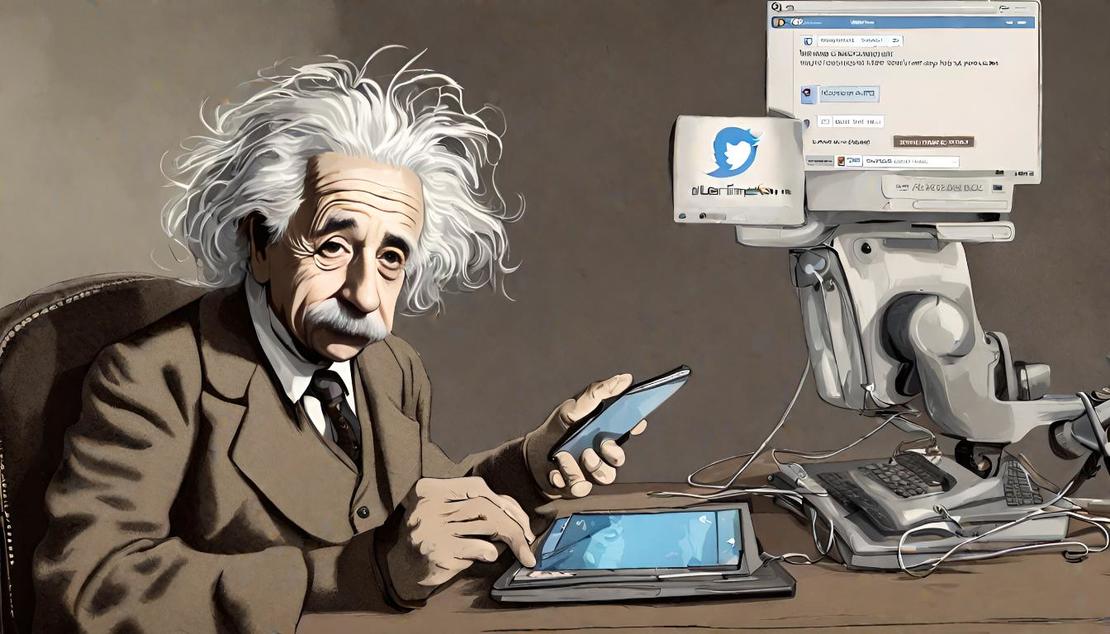Scientific communication in the age of influencers
28 January 2024 4 minute read

Everything changes, and stays the same, because humans are human.
Science communication changes over time and scientists have to adapt or become irrelevant. One can’t assume that great work will be magically recognized. Science has always involved “promotion” in one form or another. Newton lost the PR battle to Leibniz because Leibniz understood better that science requires communication.
The medium of scientific communication has changed. Immediacy is the word. Communication is now mediated by technology (algorithms and platforms) rather than editors and journals. Algorithms and platforms are the new editors and journals.
A scientist can’t just sit back and wait for the world to come to them. There are too many ideas out there. You can’t just wait for some influencer to realize your genius and promote your work. I saw this trend emerging several years ago and started building a following on academic Twitter.
In a social media world, you have to become the messenger. Scientific reputation has always mattered. The admired scientists get more attention and become more admired. We have always “followed” the work of scientists we admire. The technology for following, however, has changed. The mistake is to think that the change has only happed on the side of the followers.
The followed must also adapt or be forgotten. Building a scientific following on social media is both the same as, and different from, building a traditional following. The core is honesty. Followers need to trust the messenger. Scientific self promotion has always been a tricky dance. You have to do it but if you do it too strongly, you turn off your audience. So how do you “sell” your ideas but not “push” them?
Again, the principles haven’t changed although the communication channel has. You have to teach. A scientific audience wants to learn new things. A new paper has new ideas and a connection to previous ideas. If you can teach this, you’re done. You will build an audience (students) who value your posts (teachings) because they bring value (learning).
The worst scientific posts all start with “I’m so honored…” or “I’m excited about…”. Honestly, nobody cares that you’re excited about your latest award or paper. What’s in it for me? What will I learn? The reader is the consumer (student) and they have a world of voices to choose from. They want to learn something that excites them not you. Ideas are the language of excitement on academic Twitter.
But it is not enough to share your latest ideas. A good teacher knows that their job is not just to impart knowledge. Learning is a human endeavor and humans have doubts, anxiety, and fears. New ideas are hard and scary. A teacher must support the whole student in their discovery of science.
So to build a following, you must support the person. That is, a scientific social-media presence is about the audience as much as it is about the scientist. What do they need? How you can you guide them and support them? What insights can you share about the challenges of doing science and how to cope with them? What can you share about your own journey and struggles that can help others?
So, are influencers in science good or bad? This is the wrong question because it’s passive; it focuses on actors outside ourselves. Instead, science communication on social media demands that we be the drivers of the communication. You can’t sit back and be discovered. You have to engage constantly. And this engagement can’t be a steam of advertising. It has to be a conversation with a community.
Influential scientists have always known this. They have a constant conversation with their readers. There is give and take. They have always built community — sub-fields, workshops, conferences, journals, associations, societies. These are mechanisms to build community around ideas. Social media should be viewed the same way.
A paper rarely changes the world. Really new ideas often go unrecognized for years. A paper does not create a new field. To change a field or create a new one, you have to bring people along with you. That is, one has to become an influencer.
A recent arXiv paper provides a really interesting analysis of the effect of influencers on paper citations. Not surprisingly, papers promoted by top influences recieve more citations than similar papers that are not promoted.
The use of the term influencer here is pejorative. One could call these people curators or even editors. Einstein was a brilliant scientist but he was also and influencer. One should not appologize for being a scientific influencer.
Every scientist is an influencer. The most successful ones are not just creative but also master the technology of their time to get their ideas across. New ideas are hard to communicate. Entrenched ideas are hard to dislodge. A scientist cannot be passive in trying to change a field. So don’t bemoan the influencer. Be the influencer.
The Perceiving Systems Department is a leading Computer Vision group in Germany.
We are part of the Max Planck Institute for Intelligent Systems in Tübingen — the heart of Cyber Valley.
We use Machine Learning to train computers to recover human behavior in fine detail, including face and hand movement. We also recover the 3D structure of the world, its motion, and the objects in it to understand how humans interact with 3D scenes.
By capturing human motion, and modeling behavior, we contibute realistic avatars to Computer Graphics.
To have an impact beyond academia we develop applications in medicine and psychology, spin off companies, and license technology. We make most of our code and data available to the research community.